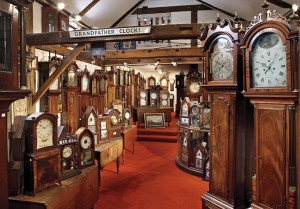
Genuine clock antiquities are not only visually appealing but they also tend to grow in value over time
People collect and acquire antique clocks for a number of reasons. Some do it purely for fun, while others feel a sense of satisfaction when they find rare timepieces. There are also those who use them as home accents and aesthetic decorations. But regardless of your intentions, procuring valuable old clocks is undoubtedly a worthy investment. Genuine clock antiquities are not only visually appealing but they also tend to grow in value over time. That being said, antique clock collectors will absolutely gain lucrative profits from selling their precious old clock collection.
When you plan on collecting antique clocks, there are plenty of exceptional and attractive types of old clocks to choose from. This includes the following:
- Antique mantle clock – One of the highly favored types of collectible clocks. They come in multitudes of designs and styles. They were conceptualized and introduced by skilled French clock makers during the 17th century. Mantle clocks are sought after by both collectors and non-collectors due to their elaborate and highly decorative design details.
- Antique wall clock – These wall-mounted antique clocks compose the largest clock category. They were first made in the late 1700’s and they were mainly designed for home use. In fact, antique wall clocks become an important part of home furnishings back then.
- Antique grandfather clock – This is one of the most well-known types of old collectible clocks. The initial form of long case clocks were introduced by an English clockmaker named William Clement in 1670. Grandfather clocks are notable for their majestic and stately appeal.
- Antique anniversary clock – Also referred as 400-day clocks, these types of antique clocks feature a unique clock mechanism. Unlike other old clock variants, they only need to be wounded once a year. After they have been set and adjusted, they are capable of smoothly running for over 400 days.
Make sure to take note of all of the aforementioned types of clock antiquities because they are surely worth considering.
Source: Antique Clocks Guide
















